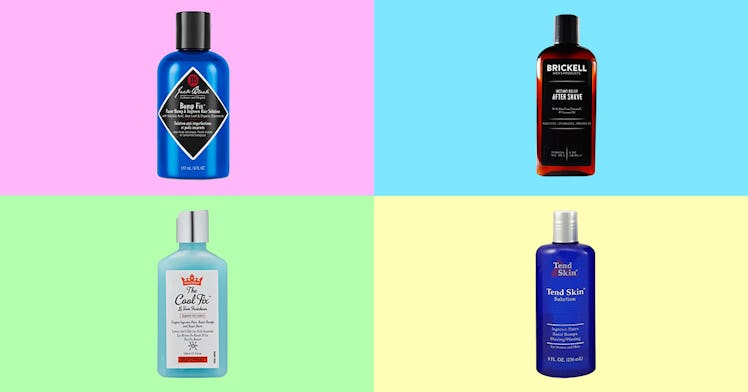The Best Treatments for Razor Bumps and Razor Burn
Yes, they can help it all go away.

If you deal with the removal of facial or body hair, you’ve likely experienced the singular joys of razor burn bumps. These are the unsightly red shaving bumps that appear on your skin after a dry shave, a shave that’s a bit too close, or a shave administered with too dull a blade. If you’re wondering how to get rid of razor bumps on your face or neck, the right razor burn cream or treatment can help keep calm your skin and reveal happy, smooth skin. It also doubles easily as a moisturizer if you’re in a rush.
But first, a note: Razor bumps and razor burn are not synonymous. Razor burn is irritated skin. Razor bumps are caused by ingrown hairs. However, both are eminently manageable.
“Razor burn is often confused with some other conditions associated with shaving. One can get ingrown hairs, including a specific type of ingrown hairs called pseudofolliculitis barbae (PB),” says Dr. Jeremy Fenton of Schweiger Dermatology Group in New York City. “One way to tell if you have razor burn or ingrown hairs is if you notice that little hairs pop out from under the skin of the bumps several days later, it was an ingrown hair. Razor burn, however, appears immediately, meaning the same day, after shaving.”
According to the American Academy of Dermatology, every man should wet his skin and hair prior to a shave, which softens the follicles. For this reason, often the best time to shave is usually after a shower, when your skin is already moist and clean. Next, apply a shaving cream appropriate for your skin type. Shave in the direction of hair growth, which is a key step in preventing razor burn. Finally, rinse after each swipe of the razor, and throw the blade away after using it five to seven times, if you’re into disposable ones. Never, never use soap to shave, cautions Fenton, because it “will dry the skin out, the opposite of what you want.”
Following the blade, it’s time to apply a post-shave balm. And if that’s not enough, “You can apply an over-the-counter hydrocortisone cream after you shave to soothe the skin. If this isn’t sufficient, a dermatologist can prescribe something stronger,” says Fenton.
Every product on Fatherly is independently selected by our editors, writers, and experts. If you click a link on our site and buy something, we may earn an affiliate commission.
This article was originally published on